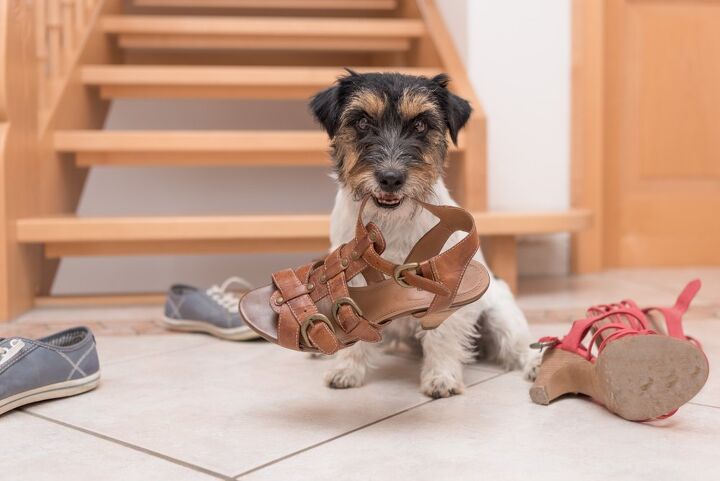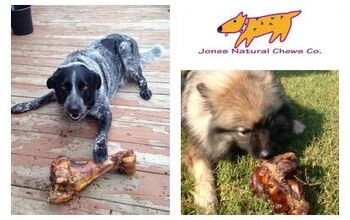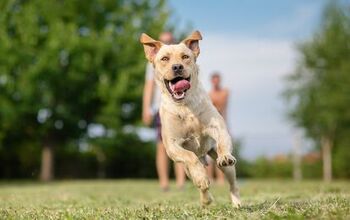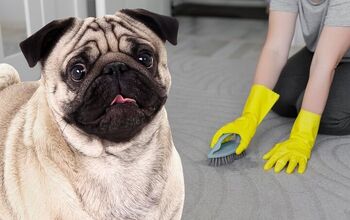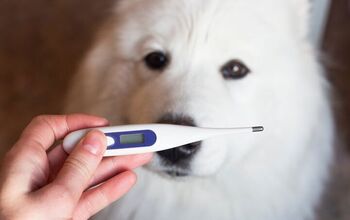Curb Your Dog’s Destructive Chewing


While most of us humans see our home decor as something to preserve for many years, our dogs may have a different opinion. To them, nothing is more exhilarating than ripping a pillow apart, and chomping on an antique table leg is a great way to pass an otherwise boring day.
A Hobby for All Ages
Teething puppies are often the worst offenders of chewing household items, but adult dogs can engage in this behavior, too. If you have a puppy seven months old or less, his little mouth is probably extremely uncomfortable. Do him a favor by having chewies like rawhides — or healthier alternatives such as No Hide — in his vicinity at all times. Even as adolescents and adults, some dogs seem to have an insatiable desire to chew, or perhaps they have a surplus of energy and not enough outlets. These dogs, too, should always have access to something appropriate to chew on. You can’t get mad at Fido for chewing your coffee table to pulp if you haven’t given him anything more suitable to munch on. Note that if your dog is only chewing when home alone, it may be caused by either boredom or separation anxiety.
Exercise Matters
If your dog or puppy is not having his exercise and engagement needs met, expect that frustration to channel through his mouth. There are several ways to get your dog’s energy out appropriately, so he doesn’t resort to refurbishing your furniture.
- Sports training, from Agility to Scent Work, allows your dog to burn physical energy while also focusing his attention on a particular task. See if your local training center offers any sports classes. If not, there are online schools such as Dog Sport University that allow you to practice these skills at home.
- Daycare is great for social-butterflies. (It is not a place to teach an unsocialized dog to be friendly with other dogs.) In many cases, a half-day of playtime a few times a week is sufficient. More than that can actually make some dogs overtired and grumpy. Dogs who have fun at daycare generally sack out for the rest of the day, with no interest in getting into trouble.
- Other activities, such as fetch, frisbee, or a romp in the dog park can be just what active dogs need.
Home Alone
When you’re out, make sure your dog is in a safe area where he cannot eat your sofa or murder your molding. This could mean confining him to a crate or a room with nothing to destroy. Conversely, it could involve “crating” your walls and furniture, meaning you use barriers like exercise pens around anything your dog considers edible. You can also try protecting your valuables with a bitter spray or wrapping them in aluminum foil.
Avoid giving edible chewies such as rawhide when your dog is home alone. God forbid he chokes or becomes ill. Instead, invest in a hollow rubber or plastic treat-dispensing toy. Some toys, such as the Kong Classic, are meant to have something mushy smeared inside for your dog to lick out (think peanut butter, yogurt, or cream cheese). Others toys are intended to be filled with hard treats that your dog has to extract. I use one called Tikr, which has several holes that slowly open to release treats over a 45-minute period. Toys like this keep your dog’s mouth busy and temporarily satisfy the urge to chew.
Teach Appropriate Chewing
You can only train your dog to “chew this, not that” when you’re there, so actively watch your dog to prevent him from sneaking off into a room where he can snack on your slippers. If you catch him in the act of chewing, don’t freak out! Instead, redirect him to something appropriate to chew on. This means you should have a ton of appropriate chews, from rope toys to bully sticks, at the ready. For puppies, you will probably need to redirect a hundred times per day; this is a normal part of the learning process.
If your repeated redirections aren’t working and you’re getting frustrated, it’s time for Fido to have a time-out. This is simply 30 seconds or so of confinement in his crate or other safe place. It gives him a little time to chill out, and gives you time to compose yourself. As long as he is being quiet after the 30 seconds, you can let him out and immediately give him a toy or chewy to work on. (Note: As long as your puppy is otherwise comfortable in his crate or pen, you can use it for time-outs. If he is generally unhappy in his confined space, use another spot for time-outs, such as a leash tied to a banister.)
Happy training!

Kate Naito, CPDT-KA, is a dog trainer at Doggie Academy in Brooklyn, NY, and author of the training book, "BKLN Manners." She draws upon her experience as an educator and dog trainer to apply positive training techniques to a challenging urban environment. Kate is a rescue advocate drawn to special-needs dogs and currently has two Chihuahua mixes, Batman and Beans.
More by Kate Naito



